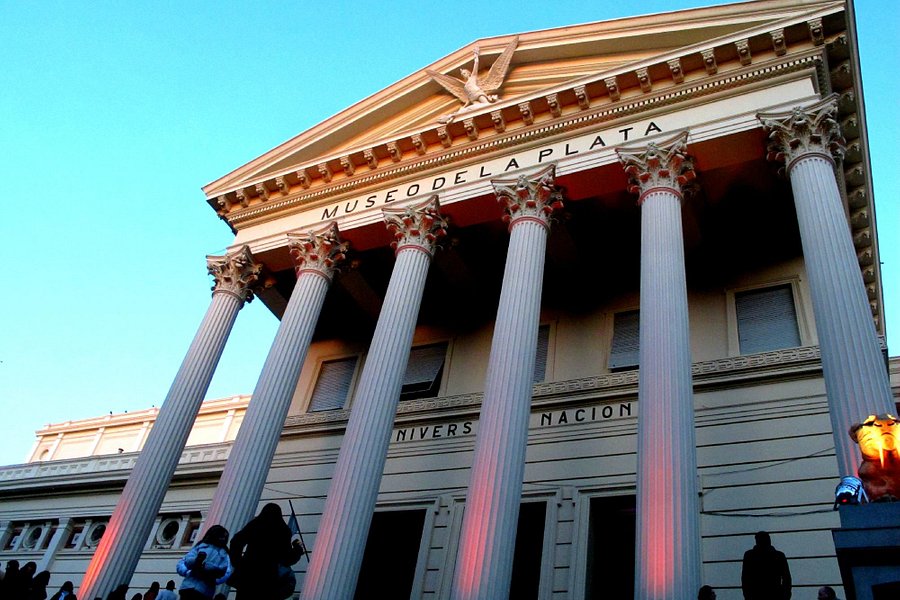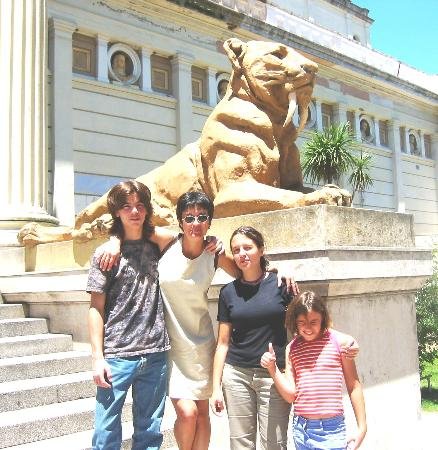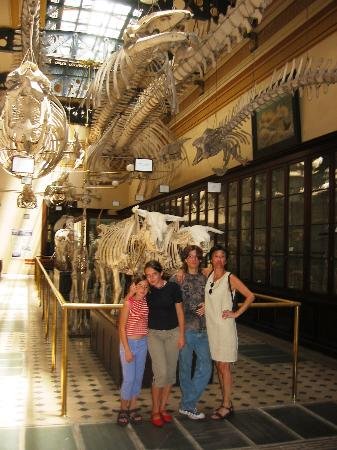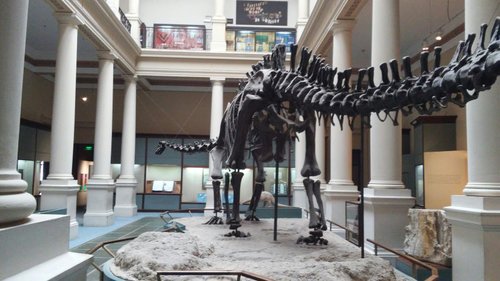Museo de La Plata, Central Argentina, Argentina
4.5 (2.040 reviews) Monday: Spent 1-2 hours Ranking #3 in Central Argentina Speciality Museums • Natural History Museums • Science Museums • Children's Museums

Outstanding asset of La Plata, with tour guides to match!
This highly regarded Argentinean museum of natural science contains over two million exhibits in the areas of paleontology, botany, zoology, archaeology, biology, geology and ethnography.


Address
Paseo Del Bosque s/n, La Plata B1900FWA Argentina
Mobile
Website
http://www.museo.fcnym.unlp.edu.ar
Working hours
Monday :
Tuesday :
Wednesday :
Thursday :
Friday :
Saturday : 2:00 PM - 6:00 PM
Sunday : 2:00 PM - 6:00 PM
Current local date and time now
Monday, May 13, 2024, 8:29
User Ratings
4.5 based on (2.040 reviews)
Excellent
67%
Good
27%
Satisfactory
5%
Poor
1%
Terrible
0%
Reviews
-
5Bernardo Esteba... R 5:00 PM Oct 15, 2018
A beautiful place, near of Buenos Aires
Close to the city of Buenos Aires. Take the bus 129 (Retiro or in 9th of July) cost 70 Ars (need to be use sube card) 1 hour until the bus stop of La Plata City (8th street) Take a taxi to the park (1st street) 100 ars The ticket for the museaum is for 80 Ars. The sckeleton and the dynosours was incredible.

-
5Paradise18368 5:00 PM Aug 8, 2004
The best in South America !!!!!!
The first purpose-built museum in Latin America, and something of a relic in itself, the Museo de Ciencias Naturales is a real treat for anyone with a fondness for old-fashioned museums. Curatorial policy, whereby each room is more or less autonomously organized, and a chronic shortage of funds make the museum somewhat patchy, but its highlights, together with its general ambience, are sufficient to make it well worth a visit. The beautiful circular entrance hall , the first of the museum's 21 rooms, all chronologically ordered, lies immediately to the right of the entrance hall. The first section is devoted to rocks and minerals , including an example of a fossilized araucaria trunk from a petrified forest in the Patagonian province of Santa Cruz. The palaeontological section which follows contains a reproduction of the fossilized remains of the largest spider ever found: named the Megarachne Servinei Hünicken, the fifty-centimetre-long arachnid was found in Bajo de Véliz in San Luis Province and is some 290 million years old. There is also a reproduction of a diplodocus skeleton, donated to the museum in 1912 by the North American philanthropist Andrew Carnegie; the unusually complete original is housed in the Carnegie Museum in Pittsburgh. In the same room, you'll find the original skeleton of a neuquensaurus, or titanosaurus, a herbivorous dinosaur common in the north of Patagonia towards the end of the Cretaceous Period. Room VI is dedicated to the beginnings of the Cenozoic Period , also known as the Age of Mammals, which extend from around 65 million years ago to the present day. The room's impressive collection of skeletons includes the gliptodon, forerunner of today's armadillos; the enormous megatherium, largest of the megafauna which, when standing upright on its powerful two hind legs, would have reached almost double its already impressive six metres; the toxodon, somewhat similar to the hippopotamus, though unrelated; and the camel-like macrauchenia. The Latin American Archaeology section is to be found upstairs along with the collection of objects from the northwest of Argentina. The first room to the left of the stairs has a large collection of ceramics, mostly from the pre-Columbian cultures of the Peruvian region: including a fine collection of brightly coloured Nazca pottery. In the second room the most notable pieces are the so-called suplicantes from the Condorhuasi-Alamito culture that thrived in Central Catamarca between about 200 and 500AD. Highly sophisticated and unique to the Condorhuasi, the suplicantes are among the most valuable pieces in the museum's collection.
See also
- Natural History Museums in Central Argentina
- Science Museums in Central Argentina
- Children's Museums in Central Argentina
- Speciality Museums in Central Argentina
More Things to do in Central Argentina
- Points of Interest & Landmarks in Central Argentina
- Architectural Buildings in Central Argentina
- Churches & Cathedrals in Central Argentina
- Historic Sites in Central Argentina
- Art Museums in Central Argentina
- Speciality Museums in Central Argentina
- Religious Sites in Central Argentina
- Parks in Central Argentina
- Historic Walking Areas in Central Argentina
- Mountains in Central Argentina
- Wineries & Vineyards in Central Argentina
- Bodies of Water in Central Argentina
- Zoos in Central Argentina
- Beaches in Central Argentina
- Dams in Central Argentina
- Amusement & Theme Parks in Central Argentina
- Flea & Street Markets in Central Argentina
- Caverns & Caves in Central Argentina
- Art Galleries in Central Argentina
- Aquariums in Central Argentina
- Volcanos in Central Argentina
- Scenic Drives in Central Argentina
- Valleys in Central Argentina